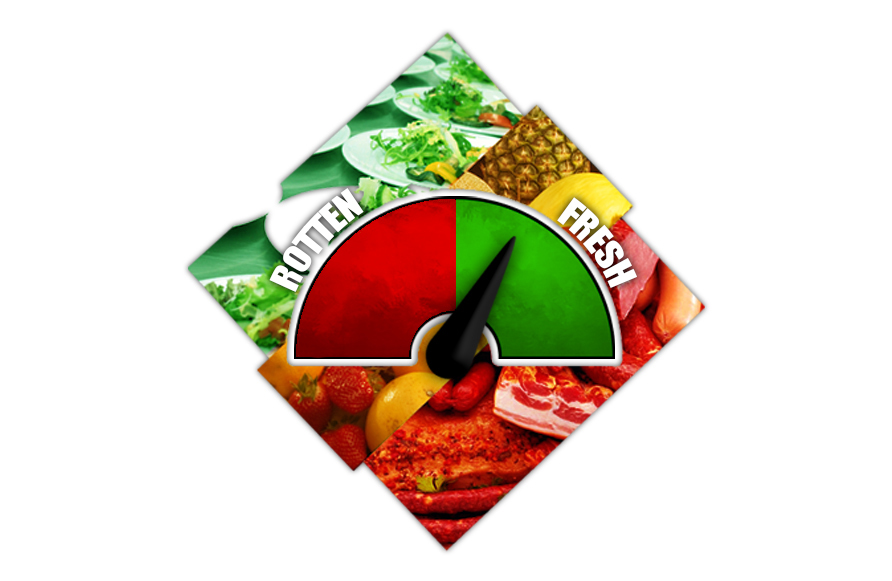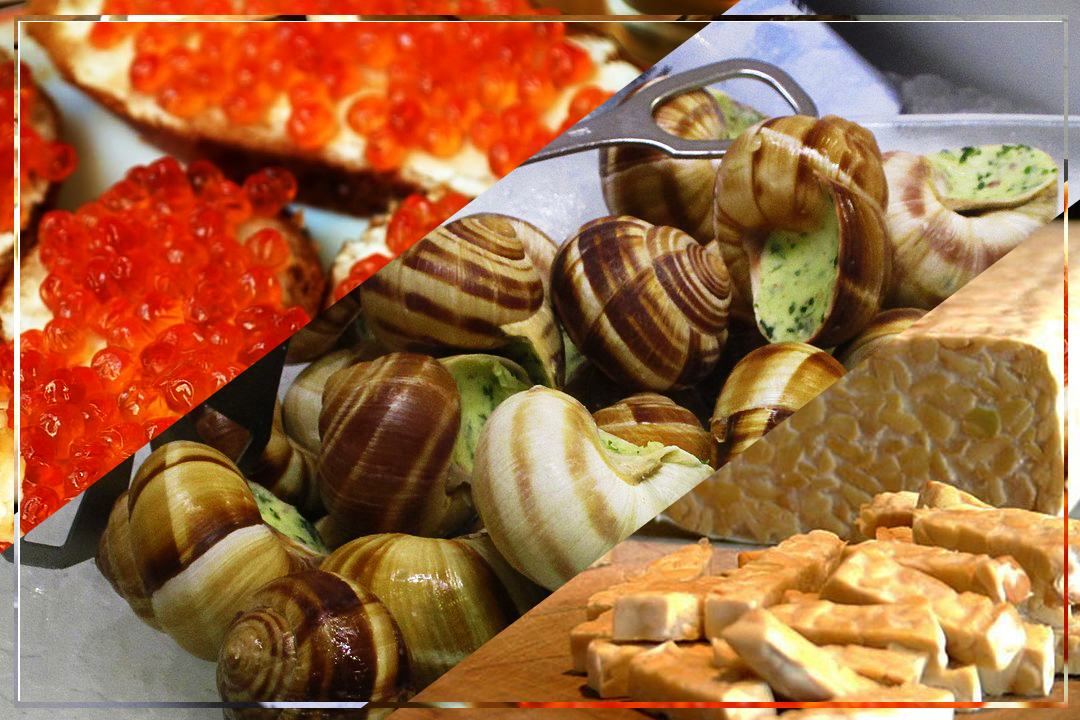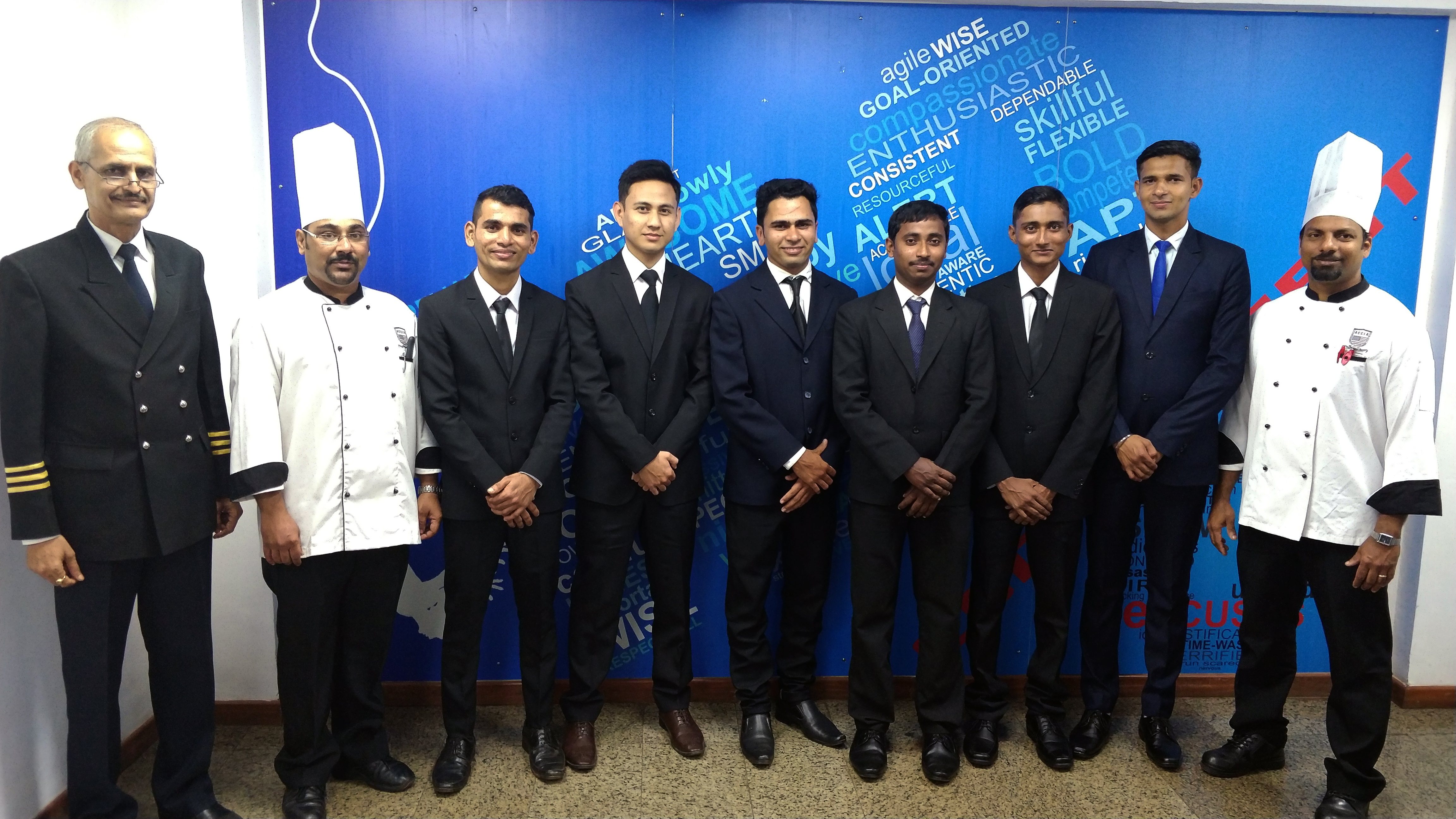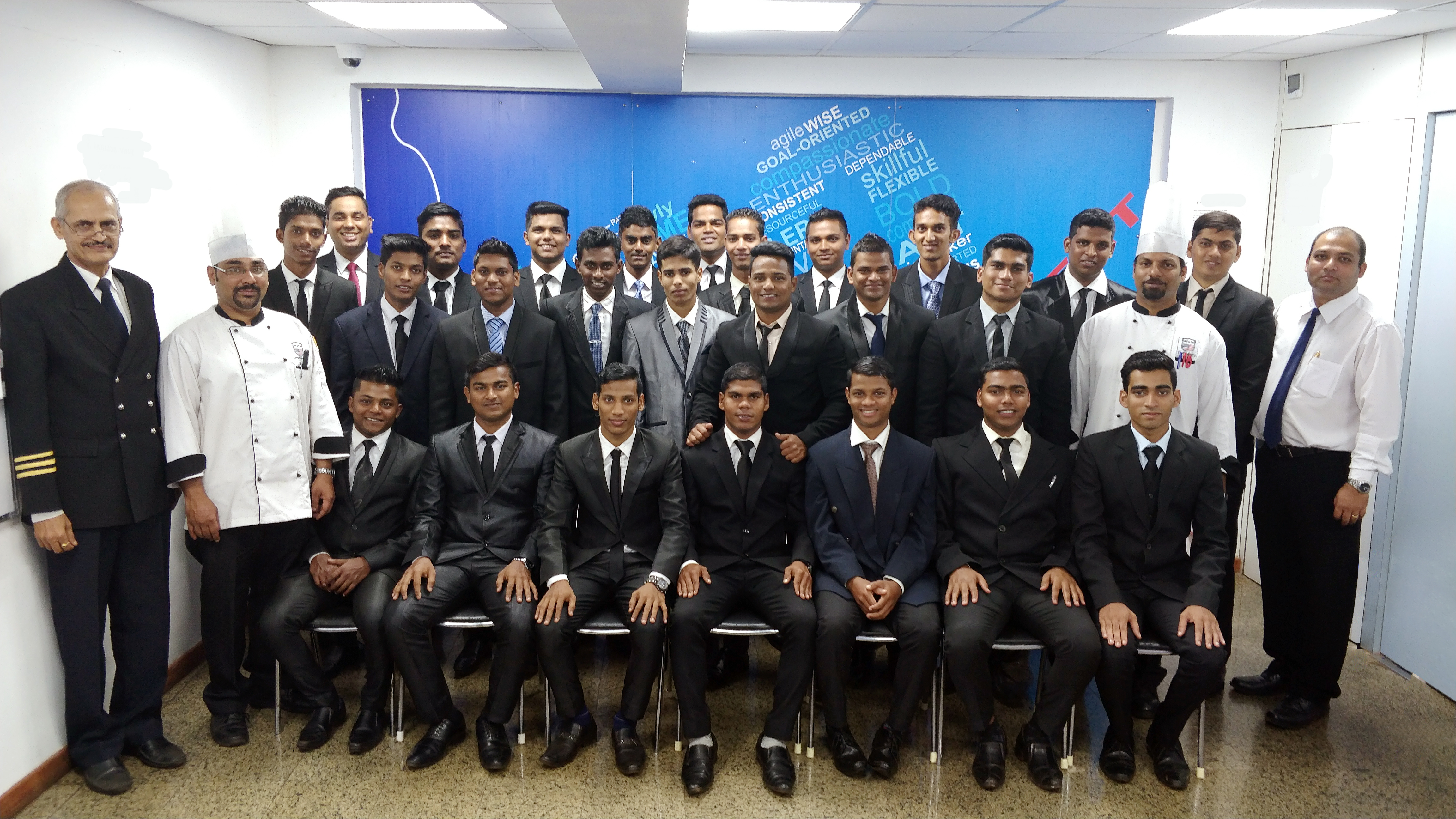Congratulations to all our ACCLA Students on Being selected for the Apollo Interviews held on the 29th & 30th of January 2018 and kick-starting their Cruise line Careers. And also all the best to them in their future endeavor’s.
Monthly Archives: January 2018
How Cruise Ship Chef Keep Food Safe To Eat
 One of the most important cruise ship chef job is serving hygienic food. This process begins long before the food reaches the kitchen and is then served to guests. Storage and preparation procedures are key factors that affect the quality of food on cruise lines.
One of the most important cruise ship chef job is serving hygienic food. This process begins long before the food reaches the kitchen and is then served to guests. Storage and preparation procedures are key factors that affect the quality of food on cruise lines.
STORAGE
Cruise ships place huge orders for food supplies to carry them through days at sea. Proper storage helps keep them fresh for longer and safe to eat. Cruise line companies design ships to have various storage areas for different food items – fresh vegetables, dairy, different types of meat, canned items and even beverages. Each of these storage areas has different temperature settings linked to the food being kept within.
There are various ways to check whether food is safe when the delivery arrives. Temperatures of food items, particularly frozen food, must be checked, and since most food is frozen on arrival each consignment must pass the test, or be rejected.
Certain foods are more susceptible to going bad at warmer temperatures. These foods – such as milk or other dairy products, must be 5 degrees Centigrade or below when the delivery arrives. Frozen food like meat and seafood should be frozen solid when it arrives at the cruise ship. There should be no signs – liquids, water stains or ice crystals – that the food had thawed and been refrozen.
Cruise ship chefs and food handlers must be careful to check for food that has passed its expiration date before storage and before preparation as well. Those that have are rejected immediately.
During storage, food must be labeled correctly. Ready-to-eat food such as potato salad or hummus is clearly marked by these common names and also a date by which it should be used or eaten.
It’s not just edible items that need correct storage. Cruise ship galleys use chemicals and cleaning supplies to wash dishes and keep the area disinfected. These should always be stored away from food and prep areas. After use, these chemicals and even dirty liquid such as mop water must be disposed of according to instructions from the manufacturer.
Utensils and vessels that have just been cleaned must also be stored correctly so they air dry and do not get contaminated before use.
PREPARATION
One of the main ways for food to get infected by microbes and other germs is through cross-contamination. Clear cut procedures and safety measures can help avoid this situation. This is particularly important for cruise ship chefs who handle both raw and ready-to-eat food items – such as say salad leaves and cooked prawns that might go in a prawn cocktail.
For this, cruise ship chefs have separate equipment and workstations for each type of food – meats, seafood, poultry, vegetables, fruit, eggs, dairy, etc. Workstations and equipment are always cleaned thoroughly before and after they are used.
Cruise ship chefs must also be very careful that ready-to-eat food does not come in contact with raw food. For example, beef steaks that need cooking should not be anywhere near a plate of cut fresh fruit that’s about to be served.
They go so far as to not mix different items or multiple batches of the same item when soaking produce in standing water or ice water. Almonds and sprouts, for example, should not be soaked in the same vessel. Similarly, one batch of lettuce leaves that may be kept crisp in ice water should be separated from a different one that may have been taken out from the fridge later.
Temperatures are critical during preparation. Several guidelines and manuals list out the various temperatures at which to thaw food items, and how to do it correctly.
Food that has been prepped but is not being served immediately should be returned to a cooler as soon as possible.
By following procedure, cruise ship chefs ensure that guests stay safe while eating their favourite food.
Cruise Ship Chefs and Unusual Food
 Comfort food is a staple on board cruise ships whereas unusual dishes are quite rare. In galleys of all floating restaurants, cruise ship chefs work to deliver a steady stream of familiar dishes, perhaps with a bit of innovation but with familiar ingredients.
Comfort food is a staple on board cruise ships whereas unusual dishes are quite rare. In galleys of all floating restaurants, cruise ship chefs work to deliver a steady stream of familiar dishes, perhaps with a bit of innovation but with familiar ingredients.
However, there are times that restaurants cater to the adventurous, offering culinary experiences to guests that they might never have dreamt of trying. Exotic ingredients such as caviar are widely available, but other lesser known but equally coveted strange treats are also on offer.
Qsine on Celebrity Cruises came up with the idea of sushi popsicles, one of which included a spicy salmon roll on a popsicle stick covered in coating of crushed cheese Doritos. Another favourite snack at the restaurant is popcorn fish n chips, which are small nuggets of popcorn, potato and batter-fried fish served in a movie-style popcorn bag.
These aren’t as unusual as some of the other treats available. One of the few meat-free unusual options on board is tempeh. Cruise ship chefs on vessels like P&O cruises learn how to make dishes using seitan and tempeh. Originating from Japan, both these dishes are a stand-in protein source for vegetarians and vegans.
Tempeh appears like a cake made of seeds. These are in fact soya beans that have been fermented using fungus spores. The process causes them to bind together into a cake form that is then eaten as is or used in soups, salads, sandwiches and stews. Thanks to its nutty, meaty and mushroom-like flavour, it can even be used as a substitute for meat in tacos and other dishes.
Seitan is often known as wheat meat, made by washing wheat flour dough with water until all the starch granules are removed. It turns into a sticky, elastic-like mass of insoluble gluten which is cooked before being eaten. This versatile food item is eaten baked, fried, or steamed, or used as a substitute for meat for its close textural resemblance.
A popular but unusual food that finds its place on cruise ship menus around the world is escargots. It is not difficult to find especially at the dining room on the Royal Caribbean, where the cruise ship chefs serve a delicious escargots bourguignonne – tender snails slathered with garlic-herb butter.
In the reptile category is the much-loved and sought-after frogs legs. Carnival’s range of cruise ships features this item on its menu. One of the ways frogs legs is served on ships is with provençale herb butter and warm garlic bread. Many vessels receive pre-cleaned legs to hasten preparation and save on space, but it helps for cruise ship chefs to know how to clean frogs from scratch.
A little less popular reptile dish is alligator. Carnival’s range of ‘Didja treats’ or ‘rare finds’ includes alligator fritters. This is served as an entrée, often using alligator tail meat that’s been marinated, breaded and fried, accompanied by spicy dipping sauces.
On cruise ships around Australia, one might find kangaroo meat on the menu, but it is more likely to find this during excursions on land as a type of novelty dish. Kangaroo meat is said to be healthier, with less fat, tending to be an option for fitness enthusiasts and adventurous foodies.
Cooking unusual meats and dishes allows cruise ship chefs to expand their repertoire and flavour range, a skill set that widens their culinary expertise.



